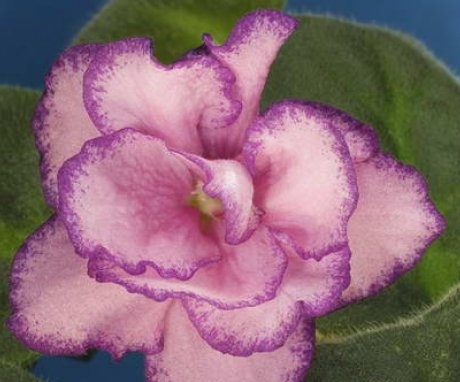How to make a violet bloom - a few care tips
There are many varieties of violets, beautiful and without flowers. This is especially true for variegated plants. They are only capable of pleasing the views with their foliage. But violets are still started for the sake of a variety of flowers. As a rule, once we get a violet, we want to grow a beautiful plant with lush flowers. If the violet is not blooming, something is clearly wrong with it.
Content:
Violet features
Violet is actually a mysterious plant. And she sometimes behaves rather strangely. She especially upsets inexperienced flower growers. Despite all their tricks, the violet sometimes categorically does not want to bloom. Therefore, the question of how to make a violet bloom can be encountered quite often.
Usually, the situation that has arisen is associated with the wrong choice of the pot in which the plant is planted. For some reason, the desire to get a large flowering bush is associated with its large size. It should be noted that this opinion is erroneous. Your violet in a large pot will be completely uncomfortable. She is likely to throw out the buds only when her roots completely fill the space allotted for them. This will happen very slowly in a large pot.
Secondly, answering the question of how to make a violet bloom, one cannot fail to mention that quality plays an important role soilin which the plant will be planted. It must be purchased ready-made in the store or prepared by yourself, following the recommendations for the selection of its components.
High-quality soil and application recommended by specialists fertilizers will help the plant quickly gain the required leaf mass, which is also important for obtaining a beautiful plant and the onset of the flowering period.
Experienced flower growers argue that you can provoke the flowering of a violet by transplanting it. The severe stress experienced by the plant, as a rule, contributes to long-term exuberant flowering. Violets can be transplanted twice a year.
The plant is also sensitive to other stressful situations. For example, you can apply plant exposure for some time in a cool and insufficiently lit place, which will then alternate with a well-lit place, feeding and optimal temperature conditions. It is important that direct sunlight does not fall on the leaves of the plant.
Care rules
Transplant the violet. The soil should be loose and fresh. Use a different pot size if necessary. Remember to cut off all the leaves in the bottom row. Don't worry, the violet will survive the loss of a few leaves well.
- Then move the violet closer to the light. If there is a large tree in front of the south-facing window, you can place it directly on the windowsill. In this case, the crown of the tree will scatter the light, and the violet itself will not receive a single burn. If your window is completely exposed to the sun, you can shade it with tracing paper or light-protective film.
- If you decide to grow violets under lamps, remember the last time you changed them. The lamp begins to fade after a year, although it is invisible to the eye. And the plant will already begin to feel a lack of light. Wipe dust off the lamp from time to time. If you are using a damp cloth, wait until the lamp cools down.It will not hurt to wipe the plant. Lift the violet closer to the lamp.
- In order to make the violet bloom, it is important to monitor the level of humidity in the air. All methods are good, but the best one is a moisturizer. Besides, this is the most convenient way. When there are many violets in your home, they will create a favorable microclimate for you.
- 2 weeks after transplanting, start feeding the plants with a fertilizer containing phosphorus. You can use any fertilizer designed for flowering plants. But do not forget to reduce its concentration by 3 times. If you water the violet in the usual way, temporarily transfer it to wick irrigation.
- In the coolness, these plants perfectly lay flower stalks. To do this, take the violet to the coolest place in the house at night. For her, a temperature of + 15-16 degrees will be good. But if your violet is used to a high enough temperature, it should be lowered very slowly.
Tear off the bottom row of leaves again after 4 weeks. After the loss of most of the leaves, the violet often begins to bloom.
What to pay special attention to?
- The pot is too big. In this case, the violet will increase the leaf mass, and flowers will not appear on it.
- Too greasy soil. Of course, the soil must contain all the nutrients. But it should be loose and light.
- Overfeeding with nitrogen. In this case, juicy and large leaves await you, but there will be no flowers.
- Little light. Insufficiently long daylight hours are not the best way to affect the flowering of violets. Do not hope that a violet standing in the back of the room will delight you with abundant flowering. Provide it with plenty of bright light. In natural light, it will bloom well in spring.
In order to make the violet bloom well, it is important to follow simple steps, remember to take care of it and provide good growth conditions. In this case, she will delight you with beautiful flowers for a long time.














I noticed that with good care and the right place, the violet blooms almost continuously. Resting for almost a minimum period of time. They do not like the bright sun, they get burns from it.
It is very difficult now to place the violet in a cooler place, since it is very hot outside, and in the house too, we do not have an air conditioner. But even if we had an air conditioner, then the sun bakes strong on the window, and in other places it is very dark here.